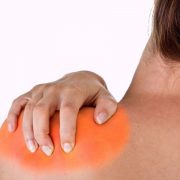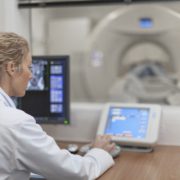Suffering from Sciatica? The Do’s and Dont’s
Four out of five people will experience a debilitating back pain and Sciatica episode at one point during their lives. Sometimes this looks like severe back pain that lasts a few days and eventually goes away on its own.
But for some – especially those that have experienced more than one debilitating back pain episode over the course of their lifetime – they experience searing pain down their leg that may or may not persist over a period of time.
When you experience back pain followed by radiating leg pain – this is known as “sciatica”.
Sometimes the pain will only go to your knee, or be a dull ache in the side of your hip and leg. But other times it can manifest all the way down to your foot and be accompanied by numbness, tingling and a loss of strength.
The good news is that there is plenty you can do on your own to help yourself recover from sciatica naturally. But there’s just as much you can do – unknowingly – to make your situation worse.
Here are some Do’s and Don’ts when it comes to sciatica.
The Dont’s:
1. Avoid resting in bed or on the couch.
While it may feel better in the moment – lying in bed or on the couch will ultimately aggravate your sciatica. Sciatica is caused by pinching or irritation of the nerves in your lower back. When you lie in a slouched posture (such as in bed or on the couch) you will put unwanted pressure on these nerves, thus aggravating your symptoms.
The trickiest part about this is that you typically won’t notice the aggravation when you’re resting. You’ll notice it after the fact when you stand up or try to move around, and mistakenly assume the movement is what’s aggravating you instead of the relaxed posture you were just in.
2. Avoid child’s pose and stretching forward.
This is another big misconception about sciatica because it tends to feel really good when you’re “in the moment” and stretching your back forward. Not always, but often, sciatica is caused by a bulging or herniated disc that is pinching your nerve.
The position of bending forward does temporarily relieve pressure on your nerves – which is why it feels good at first – but it doesn’t last.
Stretching forward also opens up the space between your vertebrae. This can influence the protrusion (bulging) of your disc. If you allow your disc bulge to protrude more onto that nerve – your nerve will become more angry and aggravated – as will your sciatica.
3. Don’t let your MRI decide treatment.
As I mentioned in our first two examples, sciatica often involves bulging discs and irritated nerves. And an MRI will typically confirm this. But here’s the thing – tons of people out there have bulging discs showing up on their MRI’s and no symptoms at all.
What matters is whether or not your bulging disc is interacting negatively with your nerve – and that is typically influenced by poor movement strategies.In other words, if you learn how to move better, you can actually make your bulging disc inconsequential and your sciatica will dissipate.
So you should never let your MRI, alone, determine your treatment protocol when you’re suffering from sciatica. What’s more important is how your sciatica symptoms behave during movement. Research has shown this to be more reliable than imaging alone because it tells us in real time what’s happening to your nerves.
The Do’s:
1. Keep moving.
While it may seem counterintuitive to move when you’ve got pain running down your leg – it’s one of the best things you can do.
Try to stand and walk upright as much as you can and pay close attention to what happens in your leg. If the symptoms in your leg start to subside, then you’ll know that your body is enjoying that particular movement and that it’s helping your sciatica.
But here’s the catch – make sure the relief lasts. Lasting relief (vs temporary) is what we’re looking for and it tells us if the movement you’re doing is a good thing for your sciatica.
2. Watch your Posture.
This may seem trivial – but maintaining good posture is critical when you’re suffering from sciatica. Remember that sciatica typically involves a pinched or irritated nerve – and irritated nerves are highly sensitive to postural changes in your lower back (especially slouched postures).
Whether you’re standing, sitting, or lying down – be sure to maintain a small curve in your lower back to minimize your slouch. This helps to keep pressure off your discs and already aggravated nerves.
3. Talk to a Movement Specialist.
While it’s entirely possible to rid yourself of debilitating sciatica without pain pills, procedures, or surgery, you’ll find it easier to do so under the guidance of a movement specialist who specializes in understanding back pain and sciatica.
Yes – you can get an MRI and go see a surgeon – but they aren’t movement specialists. They are surgical specialists. In order to get rid of your sciatica the natural way (with corrective movement strategies) – you need to work with someone who’s an expert in this.
Have you been dealing with back pain or sciatica? Or do you know someone who is?
If you”re local Portsmouth, NH, and you want help NOW for your back pain – Request a Free Discovery Session from one of my specialists. They’ll tell you if we can help and get you set up on a treatment plan right away!
Dr. Carrie Jose, Physical Therapist and Pilates expert, owns CJ Physical Therapy & Pilates in Portsmouth and writes for Seacoast Media Group. To request a free copy of her guide to back pain CLICK HERE or to get in touch, email her at [email protected].








